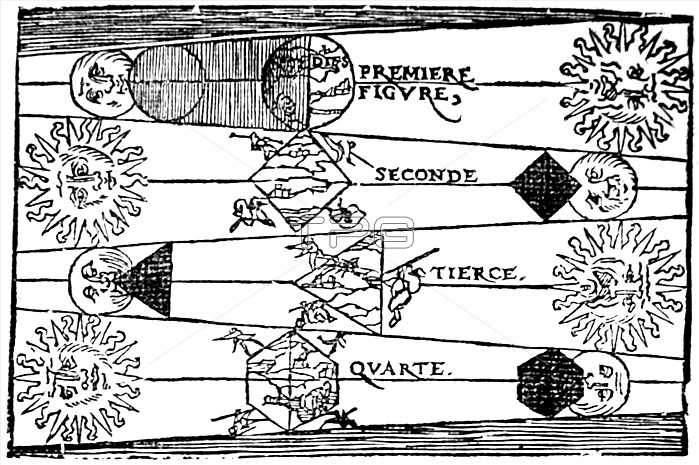
Illustration from Petrus Apianus', La cosmographie (1551) showing proof for the sphericity of the earth by observing the shape of the shadow cast on the moon during a lunar eclipse. Petrus Apianus (April 16, 1495 - April 21, 1552) was a German humanist, known for his works in mathematics, astronomy and cartography. In 1524 he produced his Cosmographicus liber, a respected work on astronomy and navigation that was to see at least 30 reprints in 14 languages. In 1527 he published a variation of Pascal's triangle, and in 1534 a table of sines. In 1531, he observed a comet and discovered that a comet's tail always point away from the sun. In 1540, he printed the Astronomicum Caesareum, dedicated to Charles V who appointed him his court mathematician. He designed sundials, published manuals for astronomical instruments and crafted volvelles (Apian wheels), measuring instruments useful for calculating time and distance for astronomical and astrological applications. He died in 1552 at the age of 57.
| px | px | dpi | = | cm | x | cm | = | MB |
Details
Creative#:
TOP22163521
Source:
達志影像
Authorization Type:
RM
Release Information:
須由TPG 完整授權
Model Release:
N/A
Property Release:
No
Right to Privacy:
No
Same folder images:

 Loading
Loading